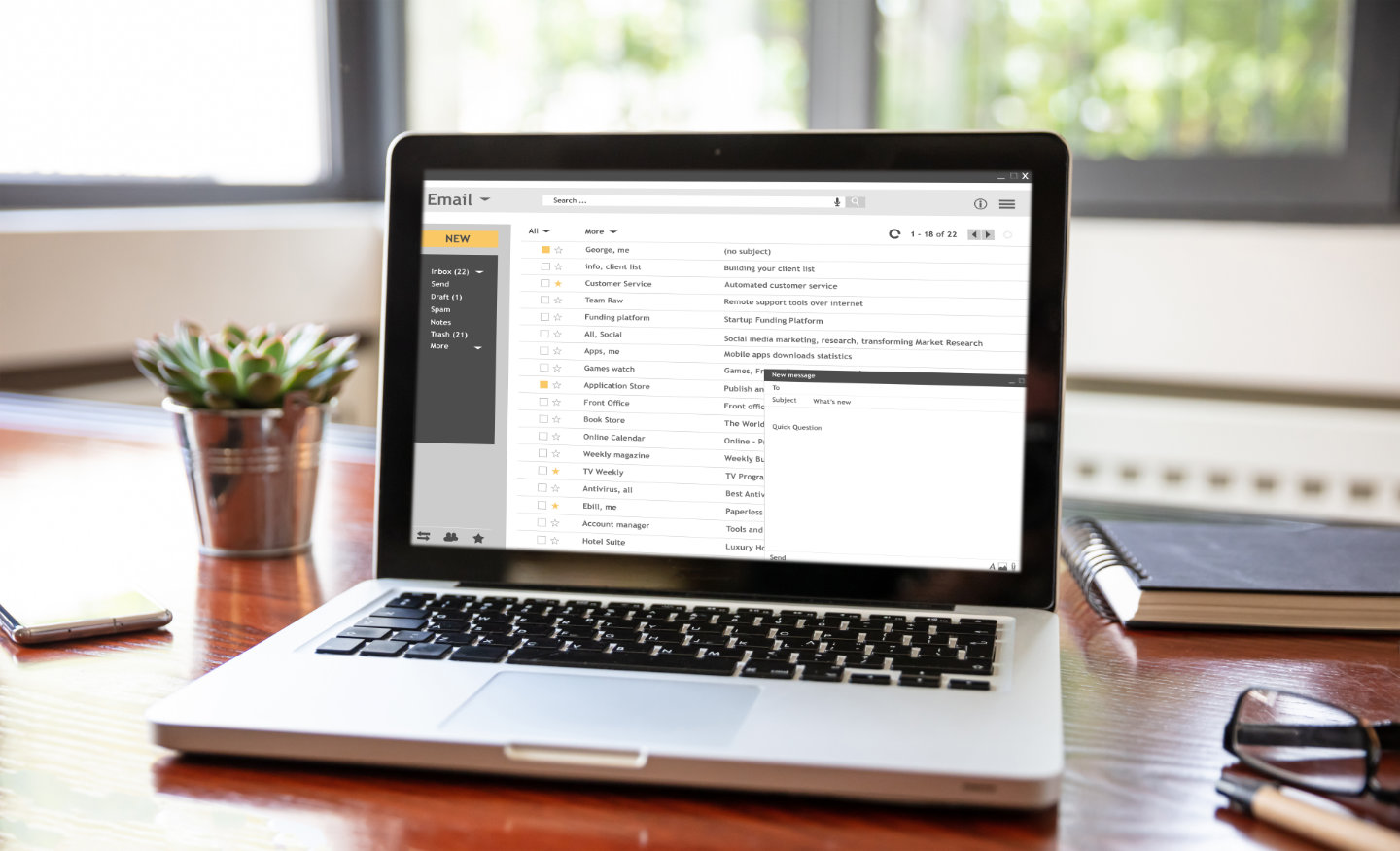In the age of digital marketing, email is still one of the most effective means for generating leads and driving sales. Email marketing should fit within a larger marketing strategy, but you also need to find ways to make it more personal and engage your customers with valuable content.
Email marketing is about creating relationships and building trust. You need to stay on track and find a way to take advantage of email’s personalization options. Here are six best practices for email marketing in 2021 that will help you create an effective email marketing strategy in today’s constantly changing digital landscape.
Why is email marketing important?
Email marketing is essential because it helps you to build relationships and trust with your customers and prospects. Email is an excellent way for companies to stay in touch with their audience, and it continues providing value as people receive messages throughout the day on various devices.
This type of marketing can build awareness, generate leads, and drive sales, especially with tailored messages that speak directly to specific customers or segments within communities. It is one of the most effective ways to keep customers engaged and entertained.
There are several benefits you should consider when it comes to using email as a marketing channel. A direct email can have a high open-rate and return on investment relevant to your target customer or leads. Email also provides instant access to your customers 24/7 because they will receive an update from you every time new information is available.
There are many types of emails you can create, including promotional emails (i.e., coupons or discount codes), informational emails (i.e., how-to guides or industry news), transactional emails (i.e., automated order confirmations or shipping notifications), and marketing email newsletters.
Best Practice 1: Follow the CAN-SPAM act
This practice may be a given, but it’s worth mentioning that it is crucial to follow the CAN-SPAM Act and all other email marketing best practices.
The CAN-SPAM Act is a law that sets the rules for commercial email, establishes requirements for commercial messages, gives recipients the right to have you stop emailing them, and spells out tough penalties for violations.
CAN-SPAM requires that commercial email messages include certain information, like your valid physical postal address.
You need to include links to unsubscribe in every promotional email or marketing newsletter subscribers receive from you. This tells them how they can opt out of receiving future emails from you.
Do not use false or misleading header information, and do not “spoof” (send mail that looks like it’s coming from someone else) your email address or the email addresses of people in your contact list.
If you violate the regulations in CAN-SPAM Act, your domain will be banned, which would mean that emails sent from could no longer be delivered. So, make sure your list is clean and scrubbed and that you are not sending emails to people who have opted out.
The Federal Trade Commission compiled a CAN-SPAM Act compliance guide to help businesses understand what the act covers and how best to comply.
Transactional emails are exempt from the CAN-SPAM Act, but all other types of the email must follow its guidelines. Opt-in is the best practice. Ensure that you have permission by asking your customers for it – ask them to opt-in and give their consent before sharing anything with you.
Best Practice 2: Email personalization
Using email personalization can make a difference and help you increase your click-through rates, improve customer engagement, and ultimately build a better relationship with your customers.
Personalize your email messages with relevant information to the customer, like their name or any other details, to connect better and engage them. And remember that personalizing doesn’t mean making things more complicated. You can keep your subject lines short or leave off the salutation when you are emailing to an extensive list if possible – make sure that it sounds like something those people would want to hear from instead of feeling impersonal and cold.
Of course, personalized emails are only as good as their content – don’t be spammy or intrusive just because you have access to data. Email personalization should always be relevant, sound, or entertaining to your customers and add some value in the context of their interest. And don’t forget that you can use email lists and segments as a way to segment your marketing efforts beyond just geography.
For example, you can group your customers based on their purchase history, product preferences, or demographics. This will let you send them email messages that are personalized to their needs and interests.
Best Practice 3: Email segmentation
Email marketing means staying on track with your brand’s voice and finding a way to take advantage of email’s personalization options. Segmenting or tagging customers based on their preferences and behavior allows you to deliver more targeted content.
Segment your email list according to different behavior and interests. You can use data like whether or not someone has abandoned their cart, downloaded something from you before, opted-in for a demo/free trial, etc.
It would be best to create segments based on demographics – this is especially important when sending targeted campaigns with personalized emails.
For example, if someone prefers email newsletters instead of promotional emails, send them marketing updates only – leave the coupons for those who prefer a more transactional approach. If they have asked to be alerted about new arrivals or sales before anyone else, make sure that is what they’re getting.
If you have an extensive email list, consider making separate lists for different campaigns. This method would ensure that each campaign is more targeted to each group of people and help you avoid sending irrelevant emails to specific contacts who haven’t shown interest in your products or services yet.
In addition to creating separate email lists, you should also have different versions of your emails. For example, you can create an email for those who will likely open it on their desktop/laptop and another version that looks good on mobile devices, thanks to responsive design.
Best Practice 4: Optimize for mobile
Don’t forget about mobile devices. If people are getting their emails on their phones, they need to read them just as well as when they get them from their desktop computers or laptops.
More than half of email opens are now happening on mobile devices. And nearly 80% of those emails that have a link in them are tapped on smartphones and tablets – which is 18 times higher than the rate for links clicked via PCs/laptops.
If you are sending emails via a third-party service, make sure that they have mobile optimization features. You can also optimize your email by keeping the design clean and simple and including only the most essential information, so it’s easy in the eyes of people who are reading them from their phones.
Ensure that your email content is responsive so that it looks good on all devices. Make sure you test your emails across different mobile devices and browsers to ensure the best experience possible for people who read their messages from a phone or tablet.
For example, when a customer opens your email on their mobile phone and taps the link to visit your website or store, they must be directed to an optimized version of the site. You can do this by using responsive websites to adjust according to how customers access them – from desktops/laptops and mobile devices.
Your subject line needs to be clear since it may not be obvious. And you may want to consider keeping your email body copy brief and easy to read so that it can be easily scannable on a mobile device – just like with social media posts, keep messages under a specific character limit if possible.
Best Practice 5: Email preference center
Creating an email preference or subscription center is one of the best ways to ensure that you send people emails they want. The email preference center allows your subscribers to choose which types of communications they would like to receive from you and also unsubscribe if needed.
When creating an email preference center, make sure it is easy for customers to find for them to manage their preferences. You can make it visible on your website – usually at the footer or in a menu bar, and include a link to it within any email you send out.
The preference center should also allow people to update their preferences as they wish – for example, by changing from receiving weekly newsletters to monthly ones instead if that’s what they prefer.
This way, you’ll be able to send people more relevant emails and reduce the number of subscribers who end up receiving an email by mistake, which will help improve your open rates and deliverability.
Best Practice 6: It’s all in the timing
Since email marketing is not just about sending transactional messages, timing becomes important when setting up a strategy for email campaigns.
Testing and reviewing analytics is vital to determining the best days/times for email campaigns to be sent out so that you can maximize their reach and effectiveness.
For example, don’t expect people to be on their phones and checking emails in the middle of company hours – you are better off sending emails to those who are most likely checking their messages from a computer than a mobile phone.
You can also consider sending emails in the morning when people check their email at work or over breakfast.
Timing your emails to correspond with different types of messages is important as well – if you’re emailing someone a coupon code for 20% off their next purchase, it’s best not to send them that coupon on Sunday at midnight.
Therefore, don’t just send your email messages at the best possible time – also consider what day and even what week is best for sending particular types of emails: are you advertising a sale? A new product or service launch? Or maybe it’s better to schedule that newsletter or email blast for a weekend?
You can even send different versions of the same email at other times – that’s called A/B testing, and it is one way to figure out what works best when sending emails. This will also help you determine if your audience responds better to certain messages on particular days or during certain hours.
Email marketing is a relatively inexpensive and highly effective way to get your target audience engaged. The best practices mentioned above will help you create an email strategy that works for your organization and customers.
Most people find their inspiration from other places than just social media, so it’s essential to keep the lines of communication open with all of your contacts to keep your email marketing strategy effective.
Looking for help on your email campaigns?
Check out our email marketing services today. Contact us here.


